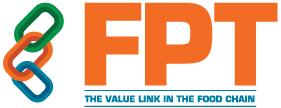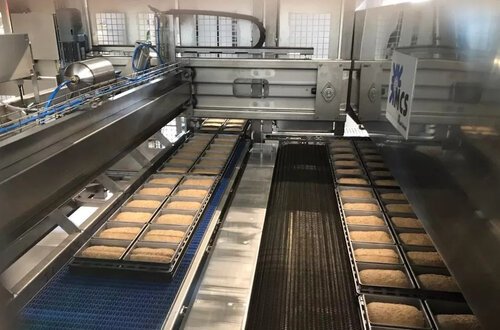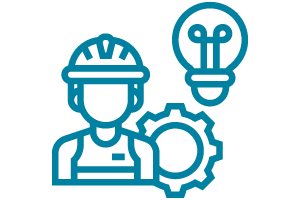Dough Handling Equipment
All high-speed bread-making procedures between mixing and proving are covered by Dough Handling equipment. Dough processing is rapidly expanding and growing important as bakers strive to suit new customer expectations such as clean-label baked goods or industry innovation opportunities.
Traditional dough handling equipment technology is aimed at producing a very fine gas bubble structure in the dough and bread with a tight crumb grain. It is intended to suit the high volume and time efficiency requirements of commercial bakeries.
To achieve the largest output in terms of pieces per minute, such processing technologies rely on sturdy, long-lasting equipment and technology. Today's dough handling equipment is mostly employed in the manufacturing of pan bread and buns. These technologies may be created, built, and implemented to work with a variety of dough systems. Sponge and dough, no-time dough, and liquid sponges are a few examples. The bakery often requests the dough method employed in the early phases of manufacturing line size and design.
The dough is a thick, flexible, and occasionally elastic mixture produced from grains, legumes, or chestnuts. The dough is normally formed by combining flour with a small quantity of water or other liquid, and it may also contain yeast or other leavening agents, as well as additional components such as fats or flavourings.
Making and shaping dough is the first step in the creation of a wide range of foodstuffs, including bread and bread-based goods, but also biscuits, cakes, cookies, dumplings, flatbreads, noodles, pasta, pastry, pizza, piecrusts, and similar things. The dough can be created from a broad range of flours, including wheat and rye, but also maize, rice, legumes, almonds, and other cereals or crops.
Automation typically leads to higher uniformity of baked goods and may relieve bakers of numerous hassles. Aside from lowering labor expenses, automated dough handling equipment eliminates potentially hazardous operations like as physically carrying dough troughs around bakeries and having workers hold blades to chop these big masses into smaller pieces. Adding heat is a major difficulty when mechanically moving dough.
Bakeries also don't want to overwork the dough, which might make it denser or harsher. Dough handling equipment has been around for a long time. Pumps, chunkers, conveyors, and pipes are some of the most popular pieces of equipment used to carry dough from mixing systems to makeup systems. Bakers may expedite the front end of the manufacturing process by using automated dough handling equipment and spiral flow feeders.
Features Of Dough Handling Equipment
Dough handling equipment technologies are geared at producing a less fine foam structure in the dough and a more open crumb grain in the finished product. It's intended for production methods that are more in line with the concepts of clean label, organic, and artisan bread. Because the production line is built for maximum flexibility, such technologies often function at much lower rates, and in certain cases, it is dependent on lengthier fermentation phases and more delicate / slower dough formation during makeup.
Short-time dough systems and the processing of highly refined wheat flour have long been the focus of dough handling equipment designed for breadmaking (i.e. flours that do not contain wheat bran and wheat germ). Over the last few decades, this strategy has resulted in effective high-speed baking processes. Traditional dough processing, as well as the technologies that go with it, are currently being re-evaluated. Consumer interest in clean-label products has shifted in recent years, resulting in bakers using fewer synthetic flour improvers and substituting chemical preservatives and other highly useful additions.
Modifying the bread formula has been the most effective way to increase the breadmaking performance of unprocessed wheat flour (e.g. whole wheat, multigrain, etc.). Adding essential wheat gluten, oxidizing agents, dough-strengthening enzymes, emulsifiers, and hydrocolloids, to name a few. Adapting the breadmaking process to the various properties of the raw materials, on the other hand, has received less attention. The objective has always been to create a robust formulation that is both process-tolerant and compatible with what is currently in the dough handling equipment manufacturing line.
In dough handling equipment Using a trough to move the dough from the mixer to a makeup hopper is the least stressful method for yeast-raised batches, but it is also the most labor-intensive. Today's high-speed bread and bun bakeries want to move dough without any human involvement, using dough handling equipment with horizontal mixers and makeup systems to develop totally automated systems tailored to a bakery's specific goods. The dough hopper recognizes the level of dough and may switch off the pump or chunker in an integrated system.
However, analog ultra-sensors are used to manage the speeds of the pump and conveyors, ensuring that dough is delivered to makeup equipment at a constant rate. The hopper level is maintained, and the dough chunker and conveyor never stop, but you feed at a steady pace, allowing them to keep up with the makeup line's throughput.
The latest equipment that makes this whole dough process feasible uses a lot of electrical controls. The dough is fresher since it is fed when the hoppers require it. Because of the minutes of difference, your final product appears better, is more consistent, and machines better through the makeup equipment. Operators who do it manually frequently put too much dough into the hopper, resulting in variations in the finished goods.
Dough Handling Equipment Processing Line
Ingredients, the desired result, the leavening agent (especially whether the dough is based on yeast or not), how the dough is combined (whether rapidly mixed or kneaded and allowed to rise), and the heating or baking procedure all influence the dough. Although most doughs exhibit viscoelastic qualities, there is no precise description of what creates a dough.
While dough handling equipment processing lines are frequently used to transport doughs on lines for snack manufacture, such as pretzels, the equipment may also be utilized in conjunction with Exact continuous mixers. The sandwich-style lift conveyor is usually the first piece of handling equipment used on these lines since the dough is automatically sliced into pieces at the end of the continuous mixer.
Dough Fermentation Trough
This item is used to keep mixed yeast doughs together as they ferment. Small businesses may be able to get away with using large mixing bowls on a stand instead.
Divide
Dividers use a die or cutter coupled to a hydraulic or mechanical lever assembly to cut scaled chunks of dough into equal amounts.
Divider Rounder
This machine splits the dough like a basic divider and then rounds the separate sections mechanically, substantially speeding up the dough product preparation.
Sheeter for dough
A sheeter is a machine that rolls out dough parts into uniformly thick sheets. It is made out of a canvas conveyor belt that feeds the dough between two rollers. The dough must normally be pushed over the roller multiple times to create thin sheets.
Molder
A moulder is a machine that rolls and moulds bread dough into conventional loaves, baguettes, and rolls, removing the need to do it by hand.
Proofer
A proofer is a customized box that may be used to generate the optimal conditions for yeast dough fermentation. The box maintains a constant warm temperature and humidity level that is optimal for the dough.
Retarder
Chilling or refrigerating yeast dough slows or stops the fermentation process, allowing the dough to be kept and baked later. A retarder is a refrigerator that keeps the dough moist and prevents it from drying out or crusting.
Proofer for Retarders
This machine is a combined retarder and proofer, as the name implies. The dough can be retarded for a certain amount of time before the machine changes to proofing mode and heats up to a different temperature and humidity level.
Our Principal
Kaak Group in association with Kiron Food Processing Technologies offers complete Dough handling equipment Solution For your Business. The Kaak Group bridges the gap between traditional bread-making and cutting-edge industrial bakery technologies. The Kaak Group assists you in your business with a comprehensive variety of goods and services as well as a unique whole-service philosophy.








